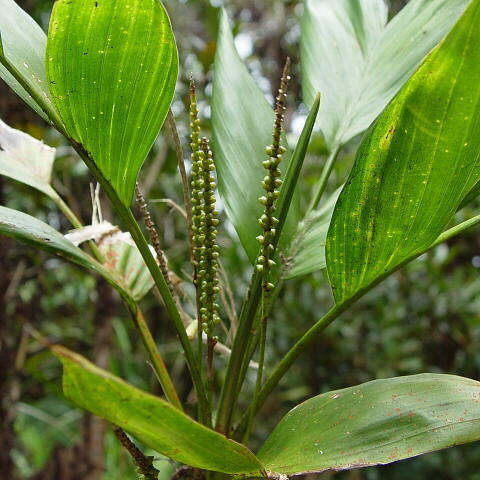An evergreen palm. It forms clumps by suckering. It grows to 2 m high and spreads to 2 m across. The stems are erect, woody and slender. It has a sparse crown of short fronds. The leaves are 60-100 cm long and consist of pairs of leaflets of unequal size. There are 12-14 leaflets. The end pair of leaflets are fishtail like. The flowers are greenish and hang down on long spikes. The fruit are orange, pink or red berries. They occur on long spikes which can be 20-40 cm long. The fruit are 12-18 mm long. The fruit are yellow, pink or red. They have one seed inside. The seed is 1-1.6 cm long. The flesh of the fruit is edible.


